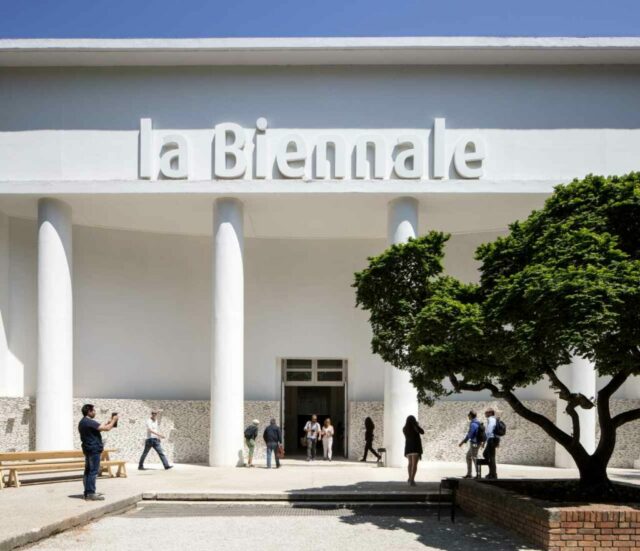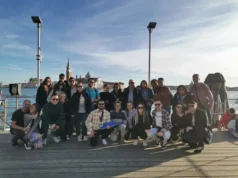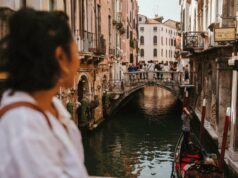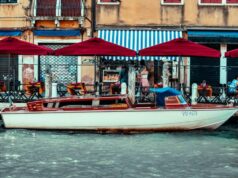The 2025 Biennale has now come to an end. Next up is the 61st International Art Exhibition of the Biennale di Venezia. Interested visitors can already make a note of the known dates for the event, which will once again take place in the familiar exhibition spaces of the Giardini and Arsenale. Further information about this unique event will follow shortly. Ticket sales will begin in spring 2026.
61st International Art Exhibition of the Venice Biennale
9 May to 22 November 2026
The Venice Biennale is one of the most famous and probably one of the most important international exhibitions of various art and cultural trends. Every year, it attracts hundreds of thousands of visitors. The event, which covers a range of different topics, always takes place annually.
Open from May 10 to November 23, 2025
There will be a pre-opening on May 8 and 9, 2025.
👍 Tip: Online tickets can only be purchased on the official Biennale website. We recommend taking a guided tour of the Biennale to get a good overview and a deeper understanding of the art and history. Check out this exclusive offer. Tour guide in English. Duration: 2 hours. Wheelchair accessible. Cancellation up to 24 hours before start.
Guided tour – Architecture Biennale 2025
Tickets for the Venice Biennale
| Architecture Biennale 2025 | Price* | Voucher |
|---|---|---|
| Adults – 3-day ticket | 35.00 € | Book online |
| Adult single ticket Giardini and Arsenale | 25.00 € | Book online |
| Young people <26 | 16.00 € | Book online |
| 🎟️ Guided tour Discover the Biennale | 143.00 € | Book online |
Everything you need to know about tickets is on the provider’s website.

- The three-day ticket allows access to each exhibition on three consecutive days.
- The single ticket entitles the holder to one entry each to the Arsenale and Giardini. This also applies to non-consecutive days and is valid until the end of the exhibition on November 23, 2025.
- Those interested in art and architecture can also book additional tickets, for example for the Fondazione Querini Stampalia, the aristocratic palace of Count Giovanni Querini (for further details and tickets, see below).
Opening hours of the Venice Biennale of Architecture
The exhibition is open from May 10 to November 23, 2025 and takes place at two different locations (10 minutes’ walk from each other). The opening hours are the same for both venues.


| Date | Opening hours | Last admission |
|---|---|---|
| May 10 - November 23 | 11:00 to 19:00 | 18:45 |
| Closed on Mondays Except on May 12 / Nov 17 | Closed | Closed |
The motto of this year’s Venice Biennale
The motto of the Venice Biennale in 2025 is: Intelligens. Natural. Artificial. Collective
Climate change is one of the most pressing issues of our time and has many facets with significant impacts on our lives. Under Carlo Ratti, curator of the 19th International Architecture Exhibition of the Biennale di Venezia, titled Intelligens. Natural. Artificial. Collective, participants are asked not only to present the current climate situation, but also to show comprehensive solutions for lasting architectural changes in the respective rooms and pavilions.
The aim is to create a comprehensive exhibition that covers all the topics in our circular economy, such as sustainability, waste reduction and the regeneration of our natural systems. Architecture and design must also be changed in parallel to be able to coexist harmoniously in a changed environment in the future. The challenge for the participants of the Biennale Architettura 2025 is to address the central challenges of our self-created environment and to prepare us for a harmonious future through ingenuity, technology and attention to detail.
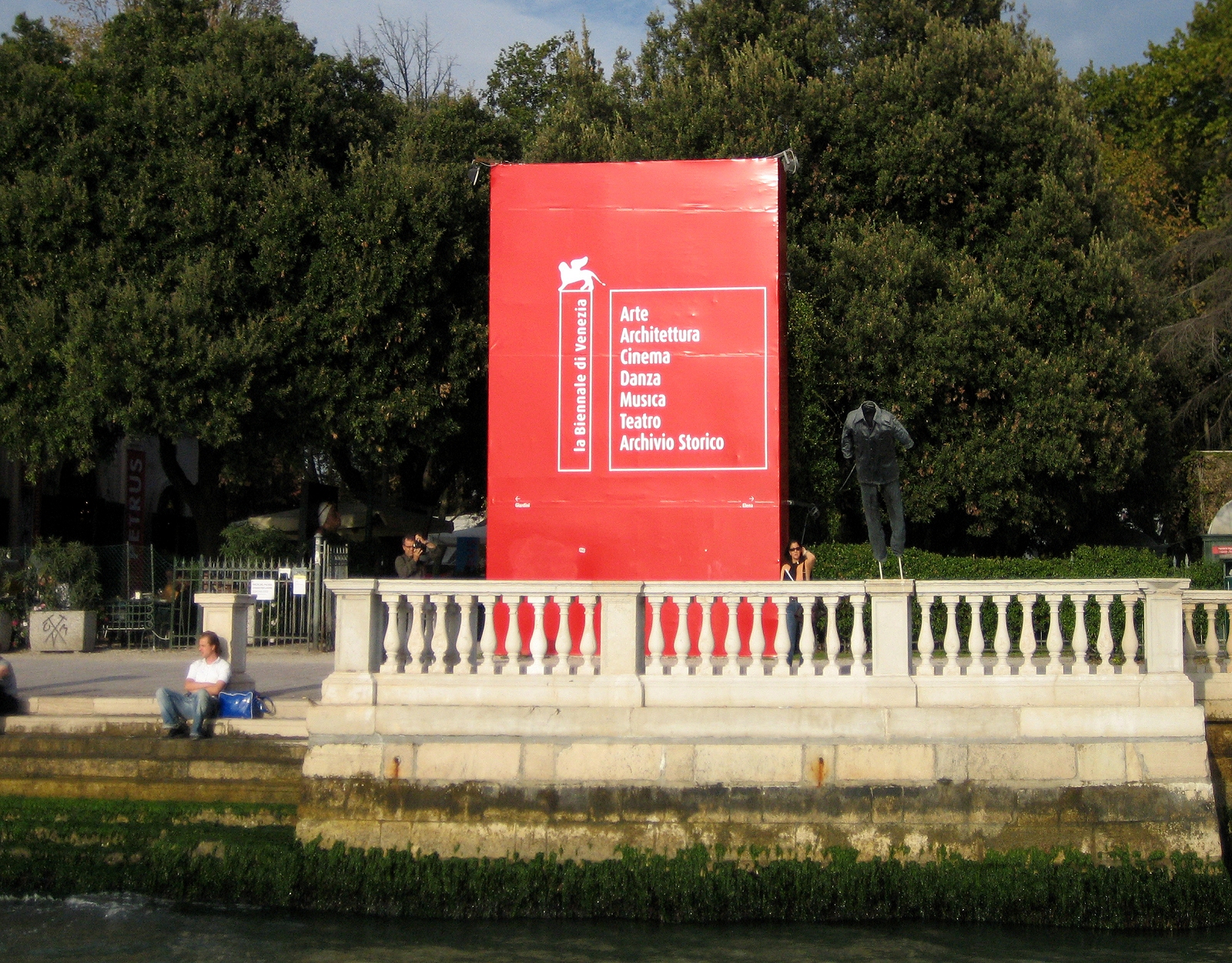
Venice Biennale: commission and experience
The motto of this year’s Biennale Architettura is: Intelligens. Natural. Artificial. Collective, which in English means Intelligent, Natural, Artificial, Collective. The spelling of the word Intelligens with an S at the end is striking. This is not a typo, but a play on words with the terms Intelligence and Gens, a translation from Latin that stands for race, nation and people.
The task and goal of the participants in the 2025 Biennale is to work together to present comprehensive solutions using models of architecture and design to address some of the greatest challenges of our time, such as climate change, loss of biodiversity, waste and pollution. Reviving natural systems and using new materials are some of the responsibilities of architecture so that people and nature can live together harmoniously on our planet in the future. This requires innovative ideas, cutting-edge technology and precise implementation.
The central pavilion (Giardini) and the Arsenale are hosting two sections at this year’s international exhibition. The individual participants are divided as follows:
Giardini: Australia, Belgium, Brazil, Denmark, Germany, Finland, France, United Kingdom, Japan, Canada, Austria, Poland, Switzerland, Spain, USA
Arsenale: Argentina, Ireland, Iceland, Italy, Lithuania, Luxembourg, Peru, Philippines, Turkey
Where are the exhibition venues in Venice?
During the Biennale, there are many side events, concerts, music, theater and other exhibitions throughout the city. However, as already mentioned above, the Giardini and the Arsenale are the centerpieces of the Biennale. The two events are within walking distance of each other, about 10 minutes apart.
Giardini della Biennale
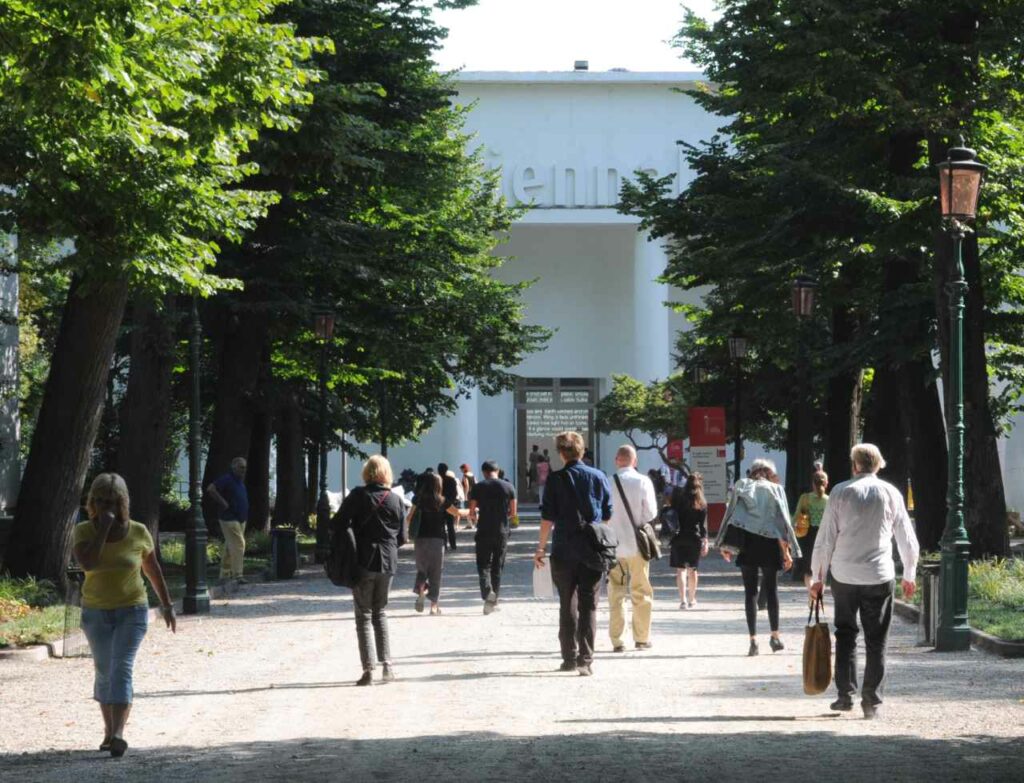
The Giardini of the Venice Biennale are gardens renowned for their art and architecture, located about 2 kilometers west of St. Mark’s Square, in the Castello district. Here you will find the numerous pavilions dedicated to the participating nations. The walk there takes about 25 minutes. The gardens were laid out at the beginning of the 19th century at the request of Napoleon Bonaparte and should not be confused with the Giardini Reali, which are also small gardens and places of tranquility, not far from the hustle and bustle of the nearby Piazza San Marco with its unique attractions, especially St. Mark’s Basilica and the Doge’s Palace.
Arsenale
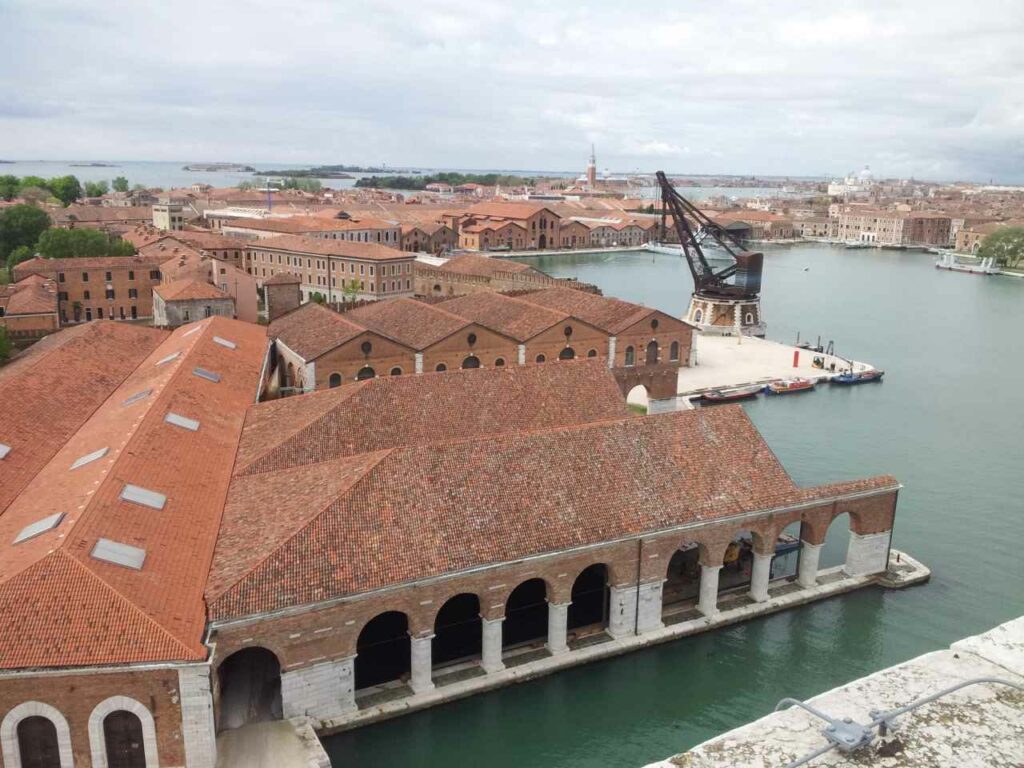
In addition to the event at the Giardini in Castello, a themed exhibition can be seen at the Arsenale, put together by the respective curators. Tickets are valid for both venues of the Biennale.
How do you get to the exhibition venues?
Here are the directions:



You can find all the information about the legendary water buses in Venice in the sections on vaporetto and public transportation. Tickets can also be purchased in advance directly via this link.
Special pavilions at the Venice Biennale
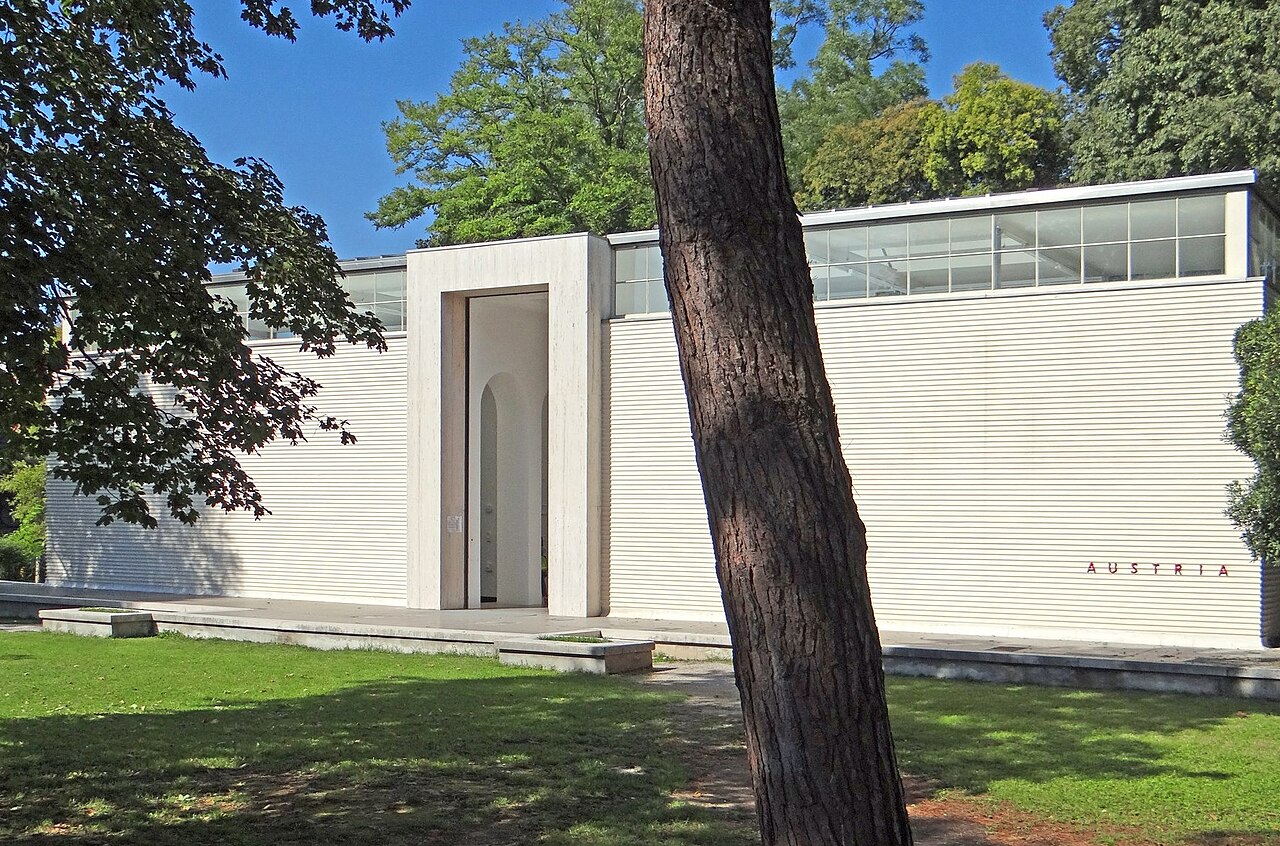
Each of the pavilions and rooms deserves a visit, but for day visitors there may not be enough time for this. Some of the Venice Biennale pavilions are presented here. These are:
Austrian pavilion
The Austrian pavilion (see photo above), with its design vocabulary that is both classical and modern, is one of the most important pavilions in the Giardini. The pavilion was officially opened on May 12, 1934, according to the plans of architects Josef Hoffmann and Robert Kramreiter.
The Austrian team of curators is working on solutions for a future architecture that will have to deal with a world affected by environmental problems and housing shortages. The social and political responsibility of architecture in interaction with aesthetics and design is an important topic here.
The central project is the housing issue. On social housing, private initiatives, affordable housing, reuse and renewal of abandoned construction sites, abandoned buildings, etc. Suggestions and solutions should be presented here.
German Pavilion
The overheating of our cities and nature is the topic of the curators of the German Pavilion. An exhibition entitled STRESSTEST will be presented on this topic. Architectural structures such as houses, roads and bridges suffer damage from the effects of intense heat.
Global warming is having an impact on our daily lives, in our homes and in public life. Architecture has a crucial role to play in adapting to climate change. The German Pavilion aims to make the urgency of this issue for humans, animals and nature tangible and visible, but also to offer solutions.
French pavilion
The French Ministry of Culture and the French Ministry for Europe and Foreign Affairs are sending the project “Vivre avec” or “Living with” in English to the 2025 Venice Biennale.
It presents architecture’s ability to combat climate change, natural forces and other conflicts by utilizing a combination of natural, human and even new artificial intelligence.
USA Pavilion
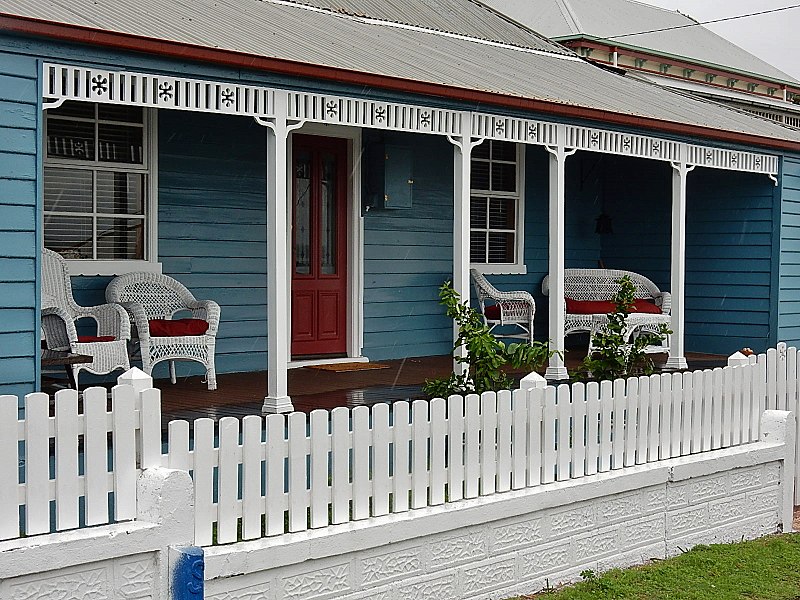
The Bureau of Educational and Cultural Affairs (ECA) of the U.S. Department of State promotes mutual understanding between the people of the United States and the people of other countries. For the 2025 Biennale, it has selected a theme entitled: “PORCH: An Architecture of Generosity”. A contribution that highlights the architectural and cultural significance of the American porch, a place of sharing and connection to civic life.
Why is it worth visiting the Venice Biennale in 2025?
As every year, the world’s elite will meet in Venice to discuss contemporary topics such as art, architecture, cinema, dance, music and theater, and to keep their promise to take up and present in an exaggerated way the burning issues of the day.
This year, the Biennale is once again dedicated to the topic of architecture. Rather unspectacular, but due to climate change, architecture is facing a new challenge. The development of a heat protection strategy for our private and public lives is becoming an important and socially highly relevant topic. The exhibition makes the urgency of this topic immediately tangible and perceptible, but also shows solutions. That alone makes a visit worthwhile!
The Biennale is becoming more and more popular. That’s why the organizers have already extended the duration to a good seven months in 2022. In 2024, there were already a sensational number of visitors in the preliminary edition: over 800,000 tickets were sold, which is a new record. Together, the “Partecipazioni nazionali” (national pavilions), the “Eventi collaterali” (side exhibitions) and the unofficial parallel exhibitions make up the world’s largest exhibition on current topics in art, entertainment and design.
Architecture and tickets
Architecture is one of the main topics in Venice. The buildings date back to the Middle Ages, some even older. Most of them are palaces of enormous size, often magnificently decorated, with architectural elements from the Gothic, Renaissance and Baroque periods. In addition to the Doge’s Palace, St. Mark’s Basilica and the Campanile, there are some lesser-known but nevertheless worthwhile places to visit.
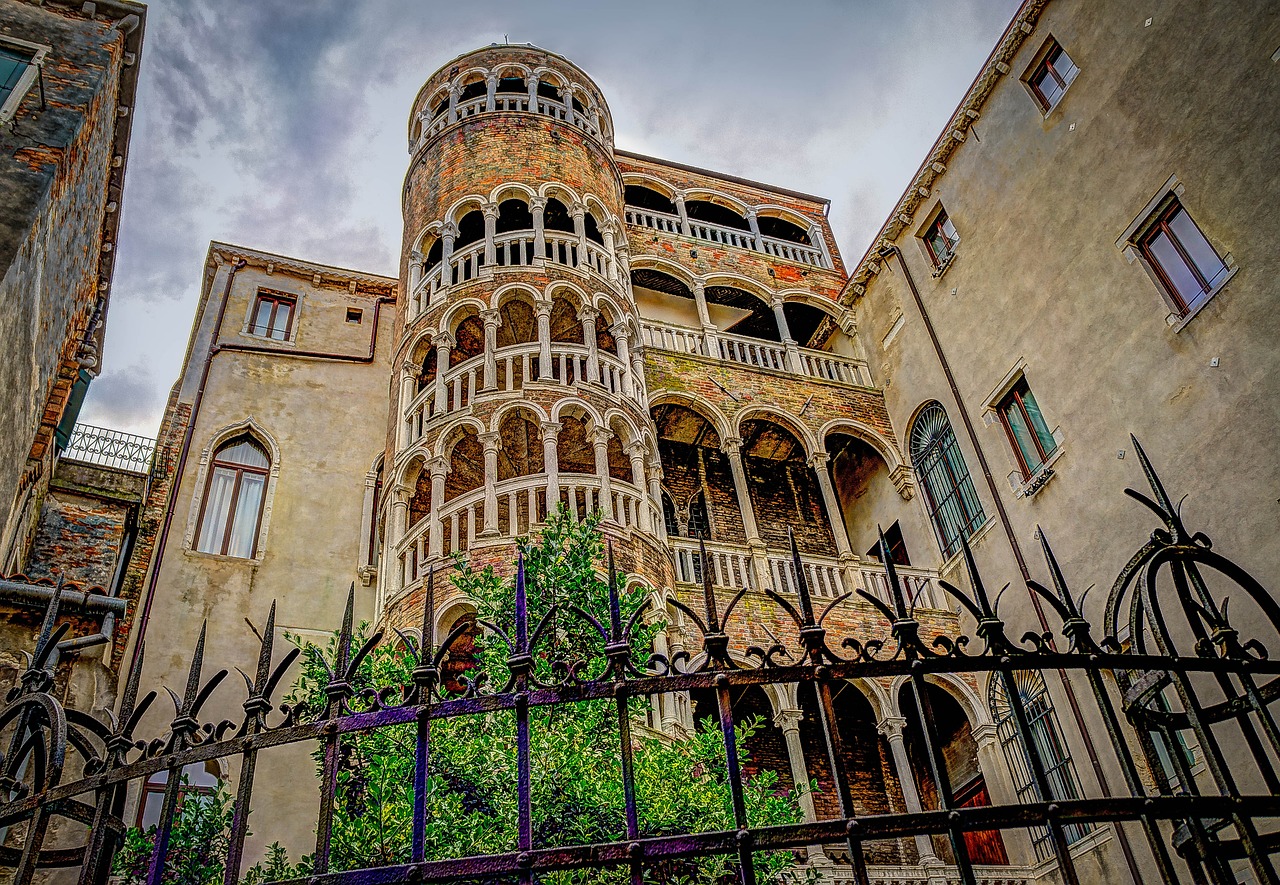
| Venezia Architettura | Price* | Voucher |
|---|---|---|
| Palazzo Contarini del Bovolo | 10.00 € | Book online |
| Querini Stampalia Foundation | 17.00 € | Book online |
The Palazzo Contarini del Bovolo is a work of art of Venetian architecture. An exciting late Venetian Gothic building, built in the 14th century. The architectural highlight is the beautiful spiral staircase, shaped like a screw and built in the Renaissance period.
After climbing 80 steps, you will be rewarded with a fantastic view of Venice from a height of 28 meters. For holders of the Venice City Pass, the visit and thus the unforgettable ascent via the spiral staircase is free of charge.


The Fondazione Querini Stampalia is also one of the masterpieces of Venetian architecture. A hidden gem that, in addition to its many architectural subtleties, also displays over 400 paintings and frescoes from the 18th and 19th centuries. A journey back in time to life in Venice almost 400 years ago. A remarkable historical house museum that also provides an insight into the lifestyle of the most distinguished elite of the Republic of Venice.




Practical tips for visiting the Biennale





Image sources:
Biennale
AlMare (https://commons.wikimedia.org/wiki/File:Giardini_2007.jpg), „Giardini 2007“, https://creativecommons.org/licenses/by-sa/2.5/legalcode
Jean-Pierre Dalbéra from Paris, France (https://commons.wikimedia.org/wiki/File:Le_pavillon_de_l’Autriche_(Biennale_d’architecture_2014,_Venise)_(15752387756).jpg), „Le pavillon de l’Autriche (Biennale d’architecture 2014, Venise) (15752387756)“, https://creativecommons.org/licenses/by/2.0/legalcode
Wendeltreppe Korkenzieher Treppen – Pixabay

